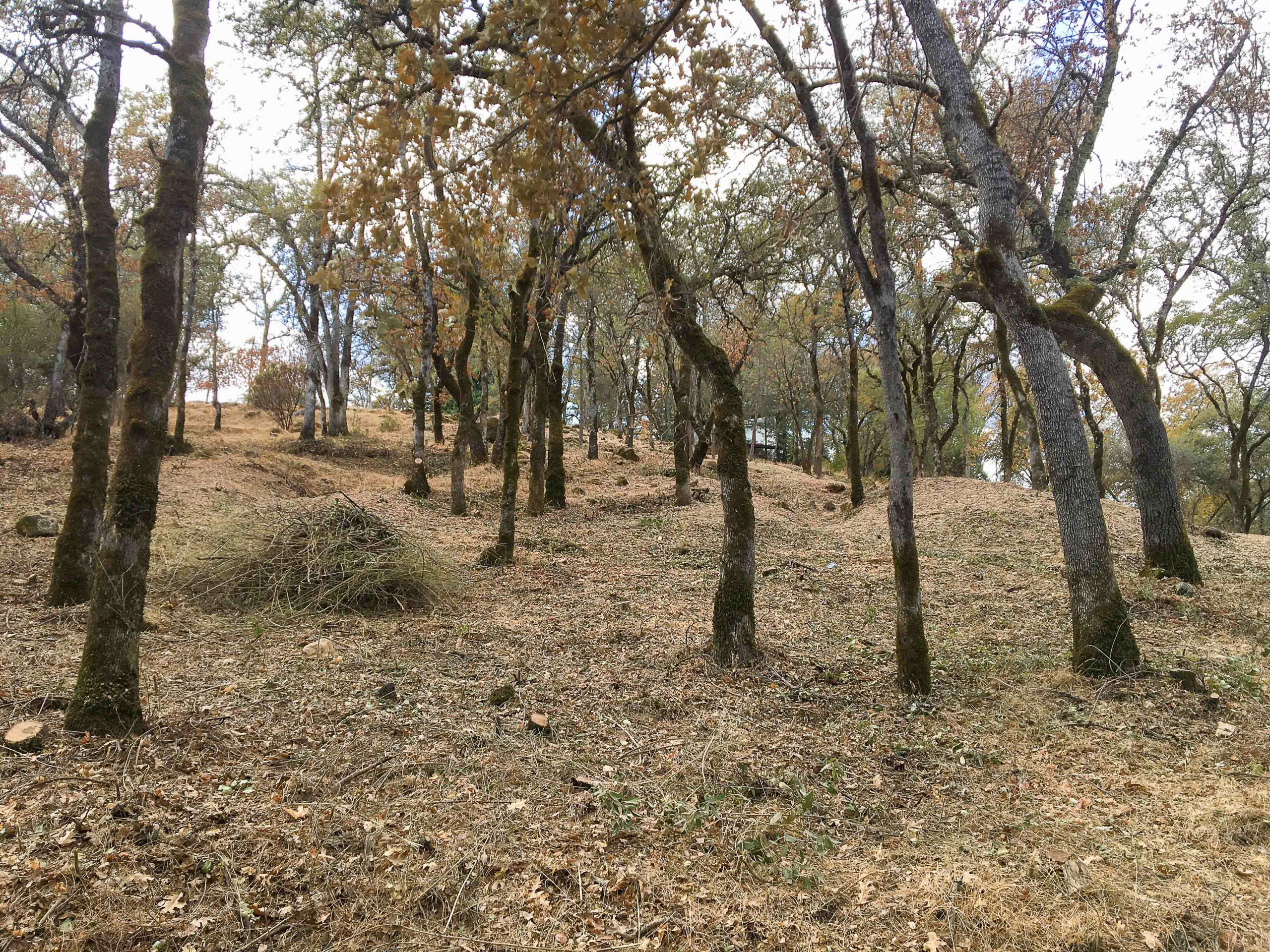 A completed section of the Auburn Shaded Fuel Break with one lone burn pile to be burned at a later date.
A completed section of the Auburn Shaded Fuel Break with one lone burn pile to be burned at a later date.
Fuel breaks are typically implemented as control lines in areas that are prone to wildfire and provide opportunities for fire suppression resources to slow fire spread. Common strategic locations include ridgetops, access roads, or outside of subdivisions within the wildland-urban interface. These strategic projects are manually implemented to break up large, continuous tracts of dense vegetation with the intention of controlling fire spread. Shaded fuel breaks are comparable, and both enhance forest health and improve fire safety. A shaded fuel break does not remove all vegetation in the treatment area and instead favors the growth of large native species by removing the understory, ladder fuels (fuels that enable a wildfire to climb to an overstory tree or canopy)[AF1] , and invasive species. Shaded fuel breaks favorably modify wildfire behavior while providing the foundation for a healthy and resilient forest.
A shaded fuel break, alone, will not stop a wildfire. Instead, shaded fuel breaks increase the probability of a successful wildfire containment by reducing fire intensity, severity, and by keeping the wildfire low to the ground and decreasing the rate of speed. These treatments provide safer conditions for direct attack by air and ground resources. Shaded fuel breaks are implemented using a variety of treatment methods including hand work, mastication, grazing, and prescribed fire. Shaded fuel breaks are one of the most effective treatment options for improving fire safety in high-risk communities across California. Placer RCD is currently implementing two 300+ acre shaded fuel breaks along the North Fork American River Canyon and will help protect several communities along the I-80 corridor. These CAL FIRE funded projects will be completed by March 2022.
